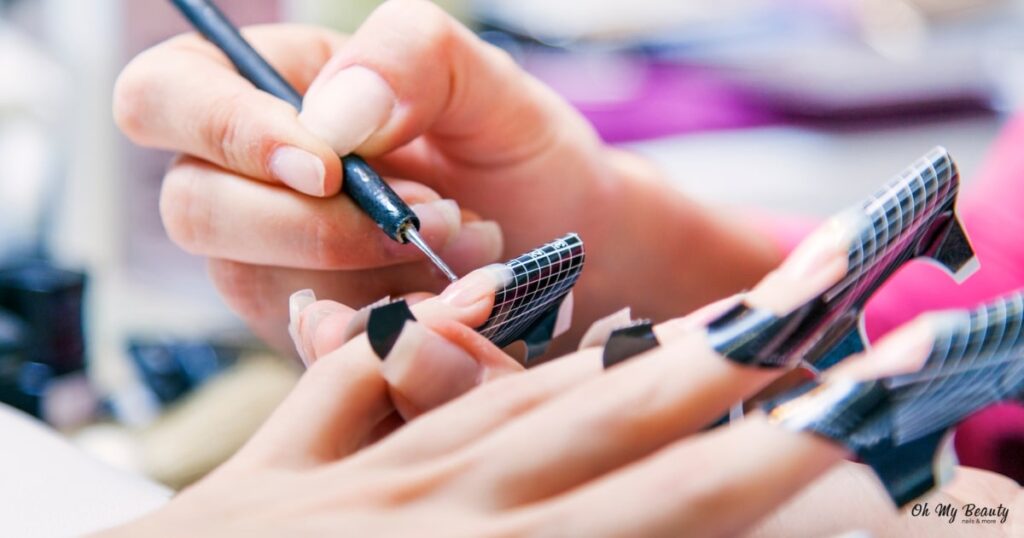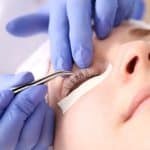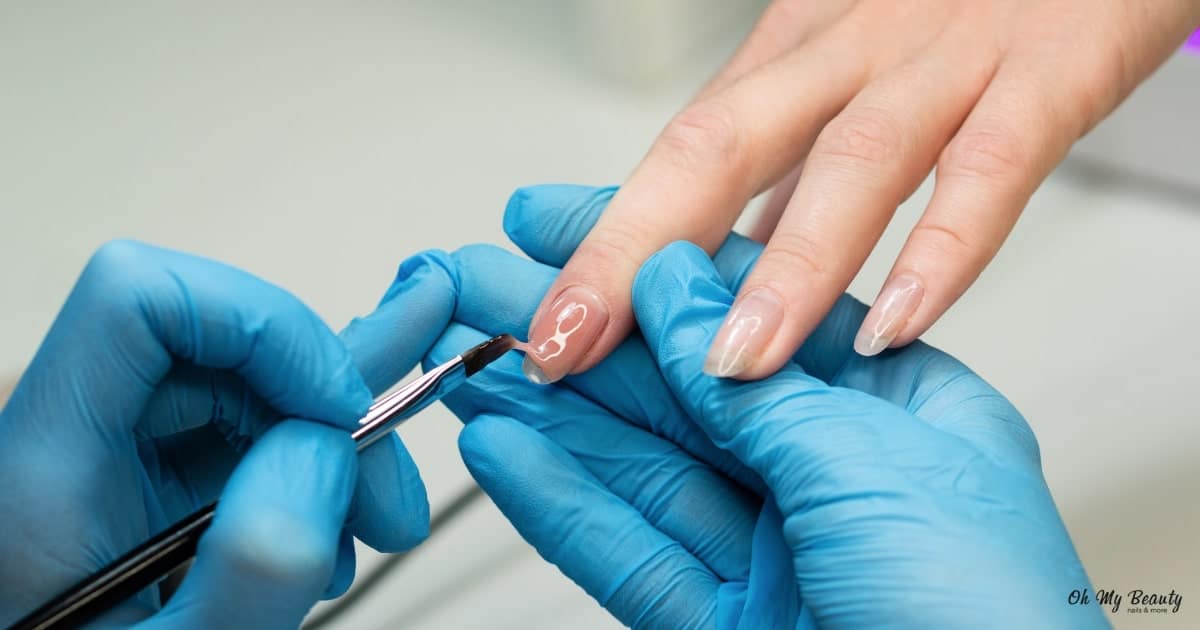Do you know what are the types of artificial nails and how to choose the right one for you?
Many women who want to strengthen and lengthen their natural nails and gain impressive length choose the artificial nails.
Precisely because it is a more complex procedure compared to a simple or semi-permanent manicure, you should know before visiting your nail technician which method of artificial nails you prefer and why.
The two main types of artificial nails are: artificial nails with gel ή acrilyc, while in recent years it has appeared acrylic which is also a popular choice.
Learn in detail the characteristics of each method and the differences between them, so that in the next one your appointment at OhMyBeauty nail salon be sure to get the nails of your dreams!
Contents:
Types of Artificial Nails
Artificial Nails with Gel
The "building" with nail gel done on the natural nail. With the help of this technique, the nail can be hardened and lengthened, making your fingers look thinner and longer! Also, this way your short or "eaten" nails will be a thing of the past!
The gel is one of the most preferred method of artificial nails that has been used for many years, mainly for people who "eat their nails", but also for those whose natural nail is difficult to grow.
Some of them advantages of gel nails are the following:
- More natural and glossy effect
- Lasts more than 14 days
- Easy and quick drying due to the use of a lamp
- They do not peel until removed or broken.
Gel building is a technique that is mainly applied by experts, but you can also apply it at home if you have the necessary products.
The extension of the nail can be done in two ways: using a special form for building the nails or using nail tips in combination with natural strengthening.
Acrylic nails
The "building" with acrylic nails done on the natural nail. The formation of acrylic nails is done by mixing a liquid monomer component - combined with hydroquinone as a stabilizer - and a polymer component in powder form.
Acrylic nails are formed by mixing a liquid monomer component, and a polymer component in powder form - combined with benzene peroxide as an accelerator.
These materials are mixed on the natural nail with the help of a mold that must dry for about 7-8 minutes. This mold can then be cut and filed to the desired shape.
Every 2-3 weeks or so, the gap that develops between some aspect of the natural nail and the acrylic nail needs to be filled.

Acrylic nails
A new product for Greek data is the acrylic, which has become quite popular and it seems, is here to stay.
It is likely to replace gel and acrylic in any artificial nail application.
It is a new material that brings the "revolution" to artificial nails, combining all the advantages of acrylic and gel, without their disadvantages.
It lasts as long as gel or acrylic and has exactly the same utility. The specific material for artificial nails serves both for physical strengthening and for extension of the nail.
An important characteristic of it is that it does not cause allergies, while it can be easily worked with any method.
Difference between acrylic and gel
The basic ones various between her gel nail extension and acrylic nails lie in the following:
- Polymerization process
- Ease of removal
- Density of natural nails
Acrylic nails are harder than gel nails. Acrylic nails are usually achieved by mixing a powder with a polymer material and a monomer liquid to create a paste-like texture, which is then placed and "molded" into a new nail shape or length.
Gel is a softer and more flexible material than acrylic. Some gels can be removed with the help of a special removal liquid (soaking).
The main chemical difference between gel and acrylic nails is that gel is already mixed and just needs to be cured in an LED or UV nail lamp, while acrylic requires mixing during application.
If you want to learn in detail pros and cons of gel or acrylic, read our related article.
Conclusion on types of artificial nails
Now that you have learned about the types of artificial nails, how they are created and the main differences between them, you can decide which method best meets your needs.
Get inspired by over 400 nail designs that we have put together for you depending on the occasion!
Regardless of the type of additional nails you choose and which best suits your nails, if done correctly by an experienced nail technician, both gel and acrylic will have the same impressive result: long, strong, healthy and beautiful nails!
Close it in time your appointment for artificial nails at Oh My Beauty to give you the nails you've always dreamed of, thanks to the special nail art techniques and professional materials we use!
We hope that this article, in addition to you, will be able to inspire many other women, helping them become more familiar with each method for artificial nails.
So don't forget to share this post with your friends!
FAQ
1. Which is more durable, gel or acrylic?
To understand which is more durable, think of a plastic cup corresponding to gel, and a glass cup corresponding to acrylic. Glass may look harder, but if dropped it will break. On the other hand, the plastic cup will remain intact.
2. Which type of artificial nails is least damaging to natural nails?
To decide which method is best for your nails, it's a good idea to consult your nail technician, who will take into account your lifestyle and any existing damage to your nails.
If you have hard and brittle nails, you need a product that will make them flexible enough to not break easily, especially nail tips. If you have soft nails that tend to peel, they need to be strengthened, so a product like acrylic is recommended. If you want a simple enhancement to your natural nail without an extension, the same applies.

 Manicure
Manicure Semi-permanent manicure
Semi-permanent manicure Artificial nails
Artificial nails Natural nail strengthening
Natural nail strengthening Oh My Beauty Pedicure
Oh My Beauty Pedicure Removal of gel polish pedicure
Removal of gel polish pedicure Permanent pedicure
Permanent pedicure Pedicure
Pedicure Pedicure express
Pedicure express Extension eyelashes
Extension eyelashes Lash lift
Lash lift Brow Lamination
Brow Lamination Hair removal and eyebrow shaping
Hair removal and eyebrow shaping Eyelash tinting
Eyelash tinting Eyelash permanent
Eyelash permanent Eyelash extension maintenance
Eyelash extension maintenance Evening makeup
Evening makeup Daily makeup
Daily makeup Wedding make up
Wedding make up Eyebrow Microblading
Eyebrow Microblading Body hair removal
Body hair removal Full face hair removal
Full face hair removal Upper lip hair removal
Upper lip hair removal Chin depilation
Chin depilation Armpit hair removal
Armpit hair removal Bikini waxing
Bikini waxing Full bikini hair removal
Full bikini hair removal Hair removal legs
Hair removal legs Depilation of calves
Depilation of calves